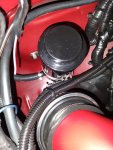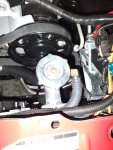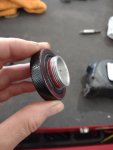- Joined
- Sep 4, 2017
- Messages
- 913
- Age
- 47
- City
- Lyman
- State - Country
- ME - USA
- Other
- 1987 Ford bronco ii 2wd
- Vehicle Year
- 1987
- Vehicle
- Ford Ranger
- Drive
- 2WD
- Transmission
- Manual
- Total Drop
- 3'' front 4''back
- Tire Size
- 245 35 18
So I was asking guys at work if an coolant overflow tank should be vented or sealed completely? I got mixed answers.Now I'm asking u folks.Does a coolant overflow tank need to breath or can or should it be a sealed system?My aftermarket tank has a rubber o-ring under cap which makes it a sealed system.Let me know if o-ring should be removed or leave it the way it is?I was told when coolant temp starts to cool off air needs to go somewhere,which makes sense.















